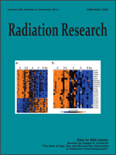
RADIATION RESEARCH
Scope & Guideline
Bridging fundamental insights with applied radiation research.
Introduction
Aims and Scopes
- Radiation Biology and Medical Applications:
Research that investigates the biological effects of radiation on living organisms, including mechanisms of radiation-induced damage and the development of therapeutic strategies to mitigate these effects. - Radiotherapy Techniques and Innovations:
Studies focusing on advancements in radiotherapy methods, including intensity-modulated radiation therapy (IMRT), stereotactic body radiotherapy (SBRT), and novel dosimetric techniques to enhance treatment efficacy and reduce side effects. - Diagnostic Imaging and Assessment:
Research exploring various imaging modalities such as CT, MRI, and PET/CT for diagnosing cancer and other diseases, including studies on imaging biomarkers for prognosis. - Radiation Safety and Dosimetry:
Investigations into radiation exposure levels, safety protocols, and dosimetric assessments to protect patients and healthcare workers from harmful radiation effects. - Environmental Radiation and Health Risks:
Studies assessing natural and artificial radiation levels in the environment, their biological impacts, and the associated health risks for populations exposed to varying radiation doses.
Trending and Emerging
- Integrative Approaches in Radiotherapy:
There is a growing trend towards integrating radiotherapy with other treatment modalities, such as immunotherapy and targeted therapies, highlighting the need for multidisciplinary approaches to cancer treatment. - Artificial Intelligence and Machine Learning in Imaging:
The application of AI and machine learning techniques in diagnostic imaging and radiotherapy planning is becoming increasingly prevalent, indicating a significant shift towards data-driven methodologies in radiation research. - Radioprotective Agents and Strategies:
Research into pharmacological agents and natural compounds that can protect against radiation damage is on the rise, reflecting an increased interest in mitigating the side effects of radiation therapies. - Personalized Medicine in Radiation Oncology:
Emerging studies focus on tailoring radiotherapy based on genetic and molecular profiling of tumors, indicating a shift towards more personalized treatment approaches in oncology. - Impact of Environmental Radiation on Health:
Research examining the health effects of environmental radiation exposure, particularly in specific populations, is gaining attention, reflecting broader concerns about public health and safety.
Declining or Waning
- Traditional Radiobiology Studies:
Research focusing on classical radiobiological mechanisms and effects is declining, possibly due to the emergence of more complex studies involving molecular and genetic factors affecting radiation responses. - Non-Medical Applications of Radiation:
Papers on the use of radiation in non-medical fields (such as industrial applications) appear to be less prevalent, indicating a shifting focus towards more clinically relevant applications. - Basic Dosimetry Techniques:
Studies that focus solely on basic dosimetric calculations without integrating advanced technology or innovative methodologies have decreased, as there is a growing emphasis on more sophisticated and clinically applicable dosimetric models.
Similar Journals
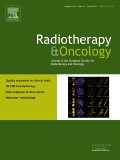
RADIOTHERAPY AND ONCOLOGY
Advancing cancer care through groundbreaking research.Radiotherapy and Oncology is a leading peer-reviewed journal published by Elsevier Ireland Ltd, focusing on the vital fields of hematology, oncology, and radiology. With an impressive impact factor and ranking in the top quartiles (Q1) of its categories as of 2023, it is recognized for disseminating high-quality research that contributes significantly to advancements in cancer treatment and patient care. The journal, which has been in circulation since 1983, aims to provide a platform for original research articles, reviews, and clinical studies that explore the latest innovations in radiotherapeutic technologies and oncology practices. This journal is essential for researchers, healthcare professionals, and students who are dedicated to improving cancer therapies and outcomes. Although it does not offer open access, the wealth of information contained within its pages supports continued education and development in these crucial medical fields.
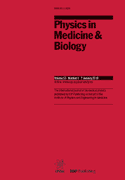
PHYSICS IN MEDICINE AND BIOLOGY
Exploring the Intersection of Physics and MedicinePHYSICS IN MEDICINE AND BIOLOGY is a prestigious journal published by IOP Publishing Ltd, with a storied history dating back to 1956 and extending through 2024. This internationally recognized journal caters to the interdisciplinary fields of medical physics and bioengineering, making significant contributions to the research and development of advanced diagnostic and therapeutic technologies. It holds an impressive Q1 ranking in both Radiological and Ultrasound Technology and Radiology, Nuclear Medicine and Imaging categories, reflecting its critical role in disseminating high-quality research. With a significant focus on merging the principles of physics with advancements in medicine, PHYSICS IN MEDICINE AND BIOLOGY serves as an essential resource for researchers, professionals, and students alike, fostering innovation and enhancing collaboration in the healthcare sector. Although the journal is not currently open access, it maintains robust participation in the Scopus database, ranking #62 out of 333 in Radiology, Nuclear Medicine and Imaging and #17 out of 63 in Radiological and Ultrasound Technology, signifying its influence and reach within these disciplines.
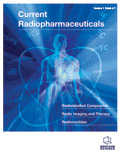
Current Radiopharmaceuticals
Advancing the frontiers of radiopharmaceutical science.Current Radiopharmaceuticals, published by Bentham Science Publishers Ltd, is an esteemed journal dedicated to advancing the field of radiopharmaceuticals. With an ISSN of 1874-4710 and an E-ISSN of 1874-4729, this journal has been a significant platform for researchers since its inception in 2009, and will continue to contribute to the literature until at least 2024. Current Radiopharmaceuticals is recognized for its impactful contributions, holding a record of Q3 in Pharmacology and Q2 in Radiology, Nuclear Medicine, and Imaging as of 2023, illustrating its vital role in these domains. The journal aims to provide a comprehensive overview of the latest techniques, applications, and innovations within the field of radiopharmaceutical science, catering to a diverse audience of researchers, professionals, and students. Despite its significant contributions, the journal remains committed to enriching the academic community with high-quality, peer-reviewed articles that can be accessed worldwide, reflecting a dedication to open dialogue and knowledge dissemination in radiopharmaceutical research.
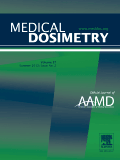
Medical Dosimetry
Empowering Professionals with Essential Dosimetry KnowledgeMedical Dosimetry is a distinguished journal published by Elsevier Science Inc, dedicated to the advancing field of medical dosimetry and its applications within oncology, radiology, and nuclear medicine. With its ISSN 0958-3947 and E-ISSN 1873-4022, this journal serves as a crucial resource for researchers and professionals aiming to enhance their understanding of radiation treatment planning and dosage calculations. Encompassing a comprehensive range of topics from clinical dosimetry to technology assessment, Medical Dosimetry has been disseminating significant findings since its establishment in 1988, contributing to the continuous development of best practices in patient care and safety. The journal currently holds a Q3 ranking in various categories, reflecting its pivotal role in the research community, while not currently offering open access, it remains an essential reference for scholars advancing the techniques utilized in medical imaging and treatment. By fostering a platform for high-quality research, it aims to bridge the gap between theoretical studies and clinical applications, making it a vital addition to any medical library.

Radiological Physics and Technology
Exploring the intersection of medicine and physics.Radiological Physics and Technology, published by SPRINGER JAPAN KK, is a prominent journal that serves as a crucial resource in the multidisciplinary fields of medicine and radiation sciences. With an ISSN of 1865-0333 and an E-ISSN of 1865-0341, the journal has been converging impactful research from 2008 to 2024. It holds a commendable position in academic rankings, currently classified in Q2 in Physical Therapy, Sports Therapy and Rehabilitation and Radiation, along with Q3 for Medicine (miscellaneous) and Radiology, Nuclear Medicine and Imaging. The journal is well-regarded in the academic community, reflected in its Scopus rankings that place it in the upper tiers of its respective categories. Although it currently does not offer Open Access, Radiological Physics and Technology remains a pivotal publication for researchers, academics, and practitioners seeking to advance knowledge and foster innovation in radiological science. Its commitment to disseminating high-quality research ensures its continued relevance and importance within these fields.

Journal of Radiation Protection and Research
Championing Excellence in Radiation Protection StudiesJournal of Radiation Protection and Research, published by the Korean Association of Radiation Protection (KARP), serves as a pivotal platform for disseminating innovative research in the fields of radiation safety and health-related issues. With an ISSN of 2508-1888 and an E-ISSN of 2466-2461, this South Korea-based journal aims to bridge the gap between scientific research and practical application, emphasizing radiation protection, environmental health, and public safety. Though categorized in Q4 for Health, Toxicology and Mutagenesis, and Q3 for several other scopes as of 2023, the journal is dedicated to publishing high-quality studies that contribute to the improvement of safety standards and methodologies in radiation practice. The journal also provides valuable insights for practitioners in the healthcare and environmental sectors, making it an essential resource for researchers, professionals, and students alike who aspire to advance their understanding and application of radiation science. As the field evolves, so does the Journal of Radiation Protection and Research, which seeks to foster a collaborative and innovative academic community dedicated to ensuring safe and effective radiation use.
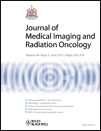
Journal of Medical Imaging and Radiation Oncology
Fostering Innovation in Imaging for Enhanced Cancer CareJournal of Medical Imaging and Radiation Oncology, published by WILEY, is a pivotal resource in the fields of oncology and medical imaging. With an impact factor reflective of its commitment to advancing research, the journal has maintained a robust reputation since its inception in 2008 and continues to thrive through 2024. It is indexed with an insightful ranking, with a Q2 classification in Radiology, Nuclear Medicine and Imaging, affirming its importance in these disciplines. This journal not only serves as an open access platform, allowing extensive reach and accessibility, but also fosters a scholarly community dedicated to the innovation of imaging techniques and radiation oncology practices. As a key player in disseminating crucial findings and advancements, it appeals to researchers, clinicians, and students who aim to contribute to the evolving landscape of medical imaging and cancer treatment methodologies. The journal is based in Australia, at 111 River St, Hoboken, NJ, and invites submissions that push the boundaries of current knowledge in this critical area of healthcare.
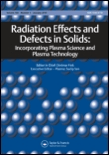
Radiation Effects and Defects in Solids
Unraveling the Mysteries of Material Responses to RadiationRadiation Effects and Defects in Solids is a prestigious academic journal published by TAYLOR & FRANCIS LTD that has been at the forefront of research related to the impacts of radiation on various solid materials since its inception in 1989. With an ISSN of 1042-0150 and an E-ISSN of 1029-4953, this journal serves as an essential resource for researchers and professionals in the fields of Condensed Matter Physics, Materials Science, and Nuclear and High Energy Physics. Despite its current categorization in the Q4 quartile across these disciplines, Radiation Effects and Defects in Solids remains critical for advancing knowledge of material responses to radiation, which is vital for applications in nuclear energy, space exploration, and radiation therapy. The journal publishes original research articles, reviews, and letters that provide insights into material properties, radiation dosimetry, and defect structures, fostering collaboration and innovation within the scientific community. As the field evolves, Radiation Effects and Defects in Solids continues to play a significant role in disseminating valuable research findings and keeping pace with emerging trends in materials science and radiation physics.

Applied Radiation and Isotopes
Connecting Researchers to the World of Radiation and IsotopesApplied Radiation and Isotopes is a premier journal dedicated to the dissemination of high-quality research in the fields of radiation and isotopes, published by PERGAMON-ELSEVIER SCIENCE LTD. With a commendable impact factor reflecting its respected standing, this journal ranks in the Q3 category within Radiation according to the 2023 evaluation, emphasizing its relevance in the scientific community. Operating out of the United Kingdom, it has been a crucial platform for innovation and knowledge sharing since its inception, covering a wide array of applications ranging from the medical to the industrial sectors. Researchers can access a wealth of articles through its online platform, although it currently does not offer open access options. Applied Radiation and Isotopes is thus an essential resource for researchers, professionals, and students aiming to stay abreast of the latest developments in radiation physics and isotopic applications, making impactful contributions to the field.

INTERNATIONAL JOURNAL OF RADIATION BIOLOGY
Innovating Insights in Nuclear MedicineINTERNATIONAL JOURNAL OF RADIATION BIOLOGY, published by Taylor & Francis Ltd, has established itself as a premier forum for the dissemination of innovative research related to radiation biology, covering emerging topics that are crucial within the fields of radiology, nuclear medicine, and ultrasound technology. With an ISSN of 0955-3002 and an E-ISSN of 1362-3095, this journal spans over six decades, from its inception in 1959 to 2024, reflecting a rich history of scholarly contribution and a dynamic approach to addressing current challenges in the discipline. Its reputation is highlighted by its Q2 rankings in both Radiology, Nuclear Medicine and Imaging and Radiological and Ultrasound Technology for 2023, underscoring its relevance in a competitive academic landscape, with Scopus rankings placing it in the top tier of its category. While operating under a traditional access model, the journal aims to connect researchers, professionals, and students, facilitating the advancement of knowledge and fostering a deeper understanding of the impact of radiation in various medical applications. The journal plays an essential role in shaping future research directions and enhancing clinical practices globally.